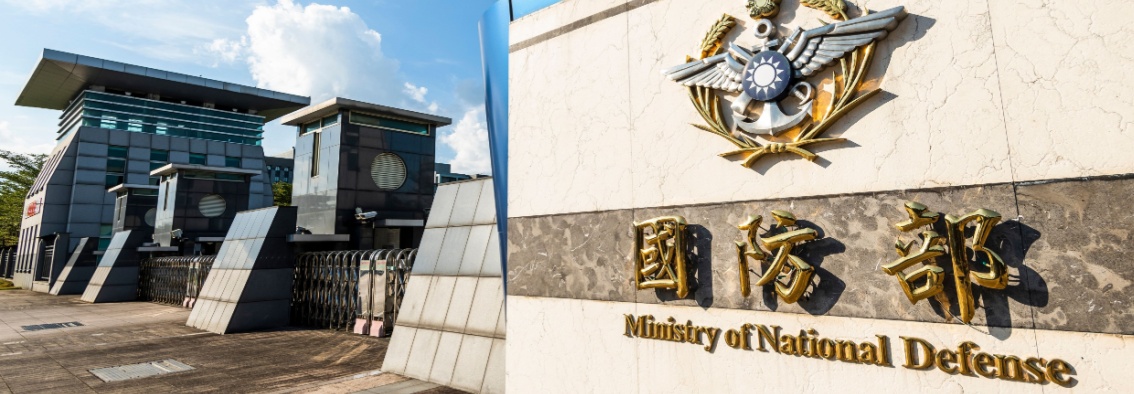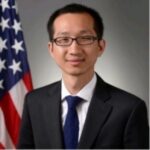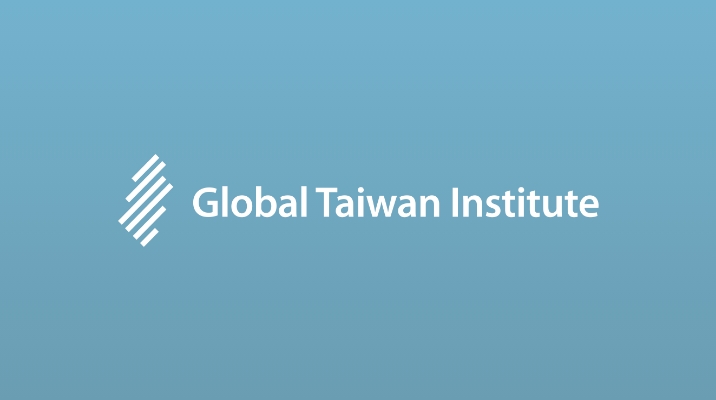Taiwan President Lai Ching-te (賴清德) has often brought up the concept of “peace through strength” (“和平源於力量”) as a central pillar of his administration, highlighting this in his inaugural speech of May 20, 2024. This phrase is identical to that used by the Trump Administration. On the surface, this promises a relatively smooth transition in US-Taiwan relations from the Biden Administration, which deepened relations with Taipei (albeit rather cautiously). However, the events of the last month with respect to Ukraine have given better insight into both President Trump’s worldview and his priorities.
President Lai’s and President Trump’s definition of peace through strength are not the same, and baseline assumptions of Trump’s foreign policy from the first administration need to re-evaluated—including the definition of peace through strength. This must be accounted for as Taiwan navigates a far more unpredictable security environment—this time, generated in part by Taiwan’s primary security partner. This article will address the respective definitions of peace through strength as offered by the two governments, and assess their implications for Taiwan.
Talking the Talk
For Lai, peace through strength is not solely a national security concept. It is a concept of communication, primarily to the Chinese Communist Party (CCP, 中國共產黨). Taiwan and the CCP used to have multiple modes of communication. The first of these was via official state channels between Taiwan’s Mainland Affairs Council (大陸委員會) and the PRC’s Taiwan Affairs Office (TAO, 國務院台灣事務辦公室). The second major mechanism was the use of party-to-party channels: largely between the Kuomintang (KMT, 中國國民黨) and the CCP’s Taiwan Work Office (中共中央台灣工作辦公室) (which like many CCP institutions was staffed by the same personnel as the state institution). Finally, back-channel communications via intermediaries were employed, such as Taiwanese businessmen residing in the PRC.
Under CCP General Secretary Xi Jinping (習近平), the CCP has chosen to view President Lai’s Democratic Progressive Party (DPP, 民主進步黨) as a completely illegitimate entity. Since 2016, the CCP has cut off all three channels of communication. Beijing views communication as leverage and a reward; thus, party-to-party communications with the CCP-deemed “legitimate” KMT have continued in an on-and-off fashion, dependent on both internal-KMT politics as well as the CCP’s views of the usefulness of the KMT as a political influence tool.
Thus, for Lai, “peace through strength” is the sole communicative policy against a CCP determined to use escalation of gray-zone warfare as a means of demonstrating Xi’s will. At its core, Lai’s messaging is meant to show that: first, that Taiwan will not be coerced into submission, but will strengthen its own defenses accordingly; and second, Taiwan will not unilaterally change the status quo. (After all, the quote is not “independence through strength.”) Taiwanese responses to gray-zone coercion—despite the escalating costs—should be seen through this lens of communication.
Finally, Lai’s “peace through strength” is also meant to communicate to the United States that Taiwan will continue to invest in its own defense, in response to years of American criticism over Taiwan’s relatively low defense spending. However, the utility of this phrase is waning, in regards to both China and the United States.
Walking the Walk
PRC gray-zone coercion against Taiwan has been well-covered, yet their sheer scale and continuous application means that Taiwan’s counter-strategy of boosting transparency over such malign actions has not been very successful. Moreover, Beijing is increasingly waging a global diplomatic offensive that seeks not just to undermine Taiwan’s sovereignty, but to get other nations to support unification by “all means”.
In the meantime, the PLA continues to develop additional options for forced unification, including options for a “quasi-military” quarantine, a military blockade, and an all-out invasion from a “cold start” (through invasion preparations similar to an exercise). These levers of coercion each demand different responses and capabilities—the costs of which the far larger PLA can absorb, while forcing the far smaller Taiwanese military to prioritize. In recent years, Taiwan’s military has wisely chosen to prioritize improving readiness against the most dangerous scenario, a rapid all-out invasion. Yet this prioritization means that the responses against the other options remain weak—which is an invitation to additional PLA pressure. For “peace through strength” to be credible to Xi, Taiwan’s military and whole-of-society defense efforts have to demonstrably provide effective resistance in all three scenarios.
Renewing the credibility of “peace through strength” now also applies to Taiwanese messaging to the United States, as well. Under the Biden Administration, Taiwan could be confident in expanded American assistance due to its position as a democratic “front-line state,” as well as the Administration’s professed “lessons learned” from the failures of the Obama Administration in dealing with the PRC. As a result, there was relatively little change from the Taiwan-friendly policies of the first Trump Administration. In many ways, the policy continuity within US national security and diplomatic institutions, and Taiwan’s solid Congressional bipartisan support, hid the skeptical attitude that President Trump himself has had with Taiwan.
In this current administration, President Trump has essentially “unshackled” himself from the national security institutionalists. Previous Taiwan-friendly advisors such as John Bolton and Mike Pompeo are no longer within the Trump circle. Moreover, with President Trump’s leadership consolidation over the Republican Party, he no longer feels the need to consult with party elders or to nominate someone that they would view as a “steady hand.” Instead, he has directly picked out the high-ranking members of the administration himself, starting with the vice president, the secretary of state, and the secretary of defense.
The consequences of this consolidation are now clear. In the first Trump Administration, the national security bureaucracy could, in conjunction with Congress, quietly shape or influence policy. Staffers could even get away with occasional corrections and delays over what they considered ill-considered or brash orders. Now, the entire bureaucracy is expected to not just rapidly comply with orders, but to loudly advocate for them. This has immediate and significant implications for Taiwan.
First, Taiwanese leadership should recognize that the Trump Administration’s peace through strength policy does not just apply to adversaries. The administration’s actions against Canada, Denmark, Panama—and most revealingly, Ukraine—demonstrate that the administration will readily apply pressure against allies and partners it assesses as weak. Weakness is determined by factors such as unity, defense spending, Trump’s personal feelings about the leadership, and economic strength. Ukrainian President Zelensky made the mistake of thinking that the administration’s peace through strength policy meant that the US would re-double support for Ukraine to demonstrate strength globally. Instead, President Trump repeatedly mentioned that Zelensky “has no cards” and was reliant on American aid for leverage against Russia, indicating that Trump viewed Ukrainian weakness as a liability for the United States. Alternatively, Mexican President Claudia Sheinbaum has played her hand in a far better fashion, winning grudging respect for her toughness—and thereby establishing a working relationship with President Trump, despite the threats of economic coercion.
Thus, Taiwanese strength and will to fight must be demonstrated in explicit terms for all parties involved. This goes beyond the standard discussion of Taiwanese defense spending as a proportion of GDP (which in any case should be at least equal to that of the US 3.4 percent, even if the 10 percent figure advocated by Elbridge Colby is unrealistic). This also means that Taiwanese military personnel shortfalls must be treated as a serious crisis as opposed to an endemic problem; that all-of-society defensive efforts should no longer be a bottom-up effort; and that the phase-out of nuclear power be urgently stopped and reversed.
Second, Taiwan cannot take continued American defense assistance for granted, and such assistance should be treated as “feast or famine.” As Ukraine has found, previous understandings and historical US bipartisan support does not amount to much with the current US administration. This means that Taiwan needs to re-double its efforts, push for defense reforms, and stockpile critical materiel while enjoying the “feast”—while at the same time, quietly drafting emergency plans for a sustainable defense if there is a cut-off in assistance. This concept draws upon the experience of the Ukraine war: through 2023 and 2024, the Ukrainian military often treated US/Western-provided deep-strike munitions as an inexhaustible resource—even when the US repeatedly told the Ukrainians that, political considerations aside, there were only a limited number available. As a result, Ukraine has now reportedly run out of US-provided deep-strike munitions; worse yet, the use of these munitions was a way for Ukrainian political leadership to dodge difficult political decisions of their own about mobilization, even as military experts warned the Ukrainians that long-range capabilities could not make up for lack of personnel on the front-line.
Taiwan’s military cannot afford to make the same mistake. While American assistance is still given, Taiwan must actively seek to leverage that assistance to develop sustainable solutions against technically difficult (capability) problems, as opposed to resource difficult (capacity) problems. An example of this is the question of where Taiwan’s military should focus its efforts: against an all-out invasion or a blockade? It made sense to focus against an all-out invasion first: if Taiwan cannot survive a rapid invasion, there is no point in countering a blockade. Indeed, in the last few years, Taiwan has made significant progress shoring up its capacities to resist an invasion. Yet of the two (intertwined) scenarios, countering a blockade is more technically difficult: unlike an invasion, where the enemy would be rushing into the teeth of Taiwan’s defenses, countering a blockade involves finding, fixing, and finishing a mobile enemy. This is a capability issue that cannot be solved simply by recruiting more soldiers or lengthening the period of training. Thus, while the feast is available, Taiwan should begin prioritizing with her American partners to improve anti-blockade capabilities such as target acquisition and littoral strike—even as Taiwan continues the work of capacity-building against an invasion.
In 2021, I wrote that US-Taiwan security cooperation should be coordinated in a way that was realistic and respectful of the concerns of both sides; that Taiwan could not be expected to undergo revolutionary military reform absent a major shock. It is gratifying to see that many of the smaller-bore methods I recommended have indeed been executed, including closer operational planning and the extension of Foreign Military Financing. However, Taiwan has now seen not just one, but two major shocks: the all-out invasion of Ukraine, and the United States withholding support for the Ukrainian partner fighting that war. Taiwan must work harder and smarter than ever to ensure that the US-Taiwan partnership holds—and for peace through strength to be taken seriously by all sides.
The main point: President Lai’s administration has invoked a posture of “peace through strength,” seeking to deter the PRC with the support of like-minded democratic states. However, Taiwan’s government needs to recognize the fundamental shift in US attitudes under the second Trump Administration, and adopt more vigorous policies to ensure that Taiwan can demonstrate peace through strength by itself.





